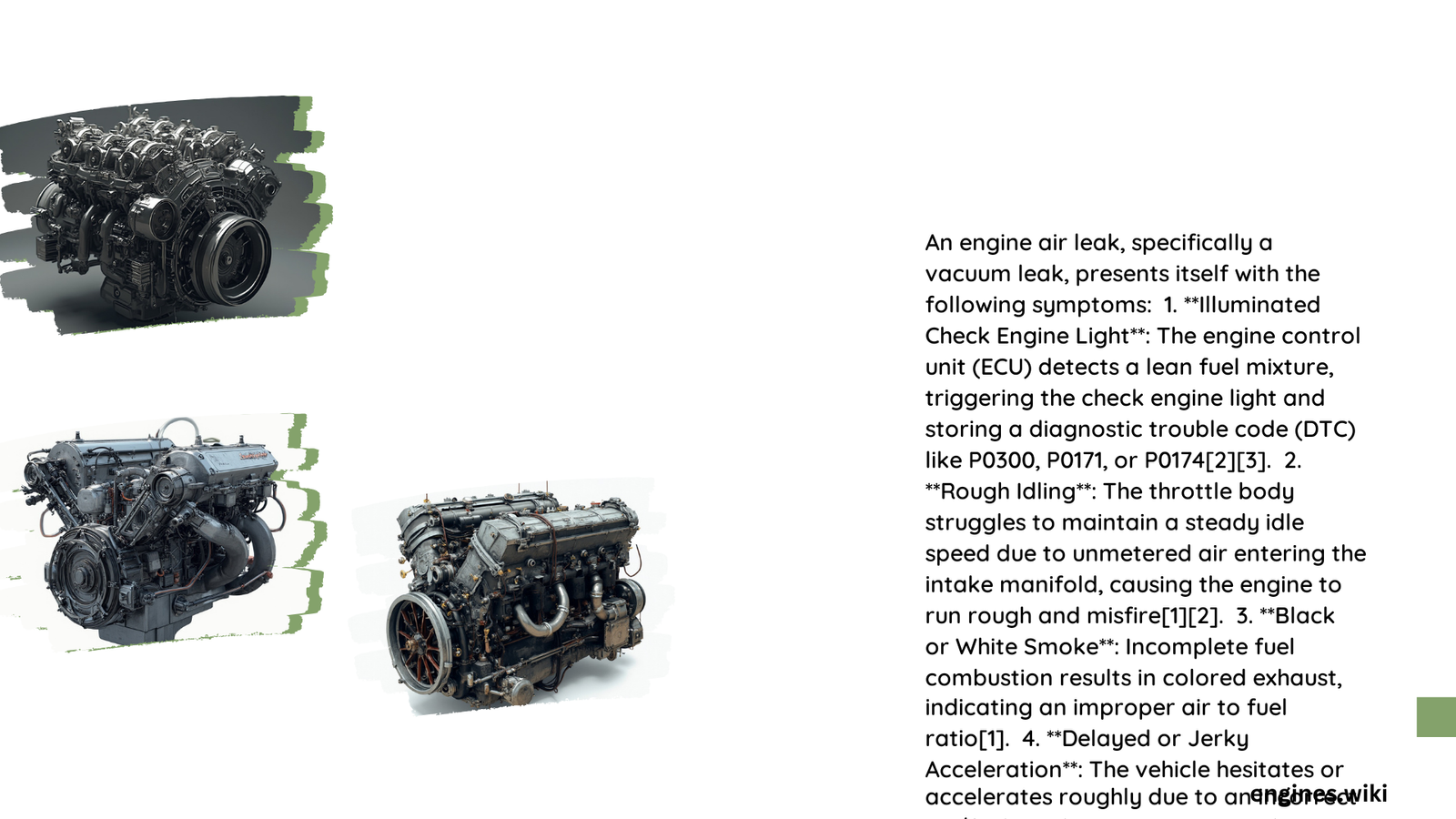Engine air leaks can silently compromise your vehicle’s performance, causing subtle yet significant disruptions in engine operation. These leaks create imbalances in air-fuel mixtures, potentially leading to erratic RPM behavior, decreased fuel efficiency, and potential long-term engine damage. Understanding and identifying these symptoms early can save vehicle owners substantial repair costs and prevent catastrophic engine failures.
What Are the Primary Engine Air Leak Symptoms?
How Do RPM Fluctuations Indicate an Air Leak?
Vehicle engines experiencing air leaks often demonstrate unpredictable RPM behavior. Typical symptoms include:
– Sudden RPM spikes during idle
– Inconsistent engine speed
– Erratic needle movement on the tachometer
| RPM Range | Normal Condition | Air Leak Condition |
|---|---|---|
| Idle | 500-1000 RPM | 1500-2000 RPM |
| Acceleration | Smooth Progression | Jerky, Unstable |
What Fuel Consumption Changes Occur?
Air leaks dramatically impact fuel efficiency through:
1. Creating lean air-fuel mixtures
2. Forcing ECU to compensate with additional fuel injection
3. Increasing overall fuel consumption by 10-15%
How Does Idle Behavior Change?
Idle performance becomes noticeably compromised:
– Engine shuddering
– Inconsistent idle speed
– Potential stalling
– Rough, uneven engine operation
What Causes Engine Air Leaks?

Which Components Most Frequently Fail?
Critical components susceptible to air leaks include:
– Vacuum hoses
– Intake manifold gaskets
– Positive Crankcase Ventilation (PCV) valves
– Throttle body connections
– Exhaust system joints
How Do Diagnostic Techniques Reveal Leaks?
Smoke Test Method
Professionals utilize specialized smoke testing equipment to:
– Introduce controlled smoke into intake systems
– Visually trace leak origins
– Identify microscopic breach points
Pressure Testing Approach
Vacuum gauge diagnostics involve:
– Measuring system pressure
– Comparing readings against manufacturer specifications
– Detecting pressure variations indicating potential leaks
What Are Advanced Diagnostic Strategies?
Which Tools Help Identify Leaks?
Essential diagnostic equipment includes:
– Digital vacuum gauges
– OBD2 scanners
– Smoke machines
– Specialized pressure testing kits
What Are Repair Cost Considerations?
Repair complexity and costs vary:
– Minor hose replacement: $50-$100
– Complex gasket repairs: $200-$500
– Advanced intake system restoration: $500-$1500
How Can Drivers Prevent Air Leaks?
Maintenance Best Practices
- Regular visual inspections
- Annual comprehensive system checks
- Timely replacement of aging components
- Using high-quality replacement parts
Warning Signs Requiring Immediate Attention
- Persistent check engine light
- Continuous rough idling
- Unexplained fuel consumption increases
- Unusual engine performance variations
Technical Performance Metrics
Quantitative Leak Impact
- Potential horsepower reduction: 10-20%
- Emissions increase: Up to 30%
- Vacuum pressure deviation: Below 10 inHg indicates significant leak
Conclusion
Understanding engine air leak symptoms empowers vehicle owners to proactively manage their automotive investments. Early detection, professional diagnostics, and timely interventions can prevent extensive damage and maintain optimal vehicle performance.
